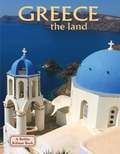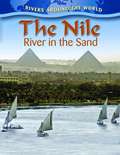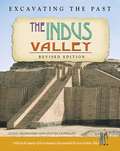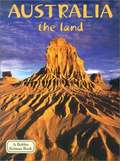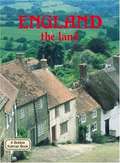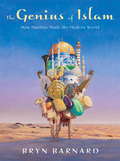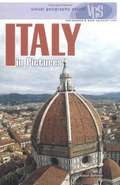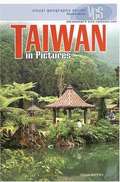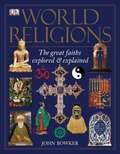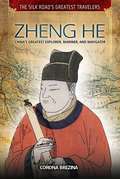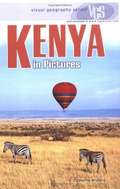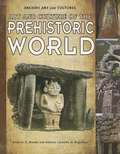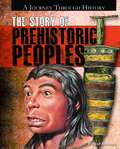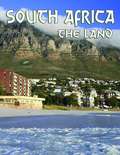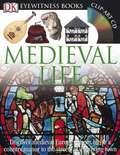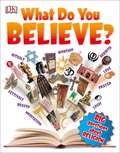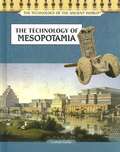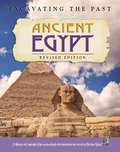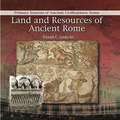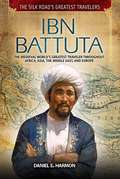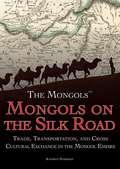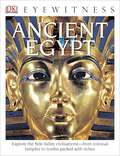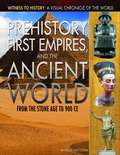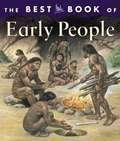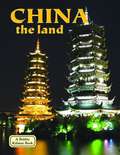Special Collections
District List: NYC Core Curriculum 6th - Social Studies
Description: The New York City Core Curriculum program aims to provide a high-quality curricula to NYC students through a seamless instructional program across grades and subjects. This list has been curated by NYCDOE for 6th Grade Social Studies materials. #nycdoe
- Table View
- List View
Greece
by Sierra AdareTakes you through the ancient and modern history of Greece. This work introduces you to the ancient city states such as Sparta and the modern cities of Athens and Patras. It also includes topics such as: roads, new and old; the origins of Greece; modern industries; and tourism, fishing, and farming.
The Nile
by Molly AloianThe Nile is the world's longest river and the birthplace of one of the greatest civilizations of the ancient world.
This book takes readers along the "River in the Sand." Ancient Egyptians depended on the Nile's annual floods to deposit fertile soil for farming.
Today, more than 70 million people still grow crops in the river's basin and fish in its waters.
The Indus Valley
by Ilona Aronovsky and Sujata GopinathContents include: The Lost Cities of the Indus Civilization; Constructing Great Cities (The cities of the rivers, Monumental Mohenjo-daro, An Indus Valley home, Excavating Harappa, Dholavira); Clues to Daily Living (Jobs, Figuring out figurines, Food and cooking); The Mystery of the Indus Script; Traveling Far and Wide; Craft Technology and the Art of Fire; The Rulers and People; The End of the Indus Civilization; Archaeology Today; Timelines.
Australia
by Erinn BantingEarth did not always look as it does today. Hundreds of millions of years ago, it was covered by one enormous landmass called Pangaea. About 200 million years ago, Pangaea began to split in two. Slowly, the two pieces drifted farther apart and split into even more pieces. Eventually, the seven continents formed: North America, South America, Europe, Asia, Africa, Australia, and Antarctica. Australia and Antarctica drifted the farthest south, into the southern hemisphere.
England
by Erinn BantingEngland's landscape is rich in beauty and dotted with history. From the breathtaking Lake District to the southern downs, take a journey across England.
[This text is listed as an example that meets Common Core Standards in English language arts in grades 4-5 at http://www.corestandards.org.]
The Genius of Islam
by Bryn BarnardThe Middle Ages were a period of tremendous cultural and scientific advancement in the Islamic Empire--ideas and inventions that shaped our world.
Did you know that:
The Muslim world has often been a bridge between East and West, but many of Islam's crucial innovations are hidden within the folds of history.
In this important book, Bryn Barnard uses short, engaging text and gorgeous full-color artwork to bring Islam's contributions gloriously to life. Chockful of information and pictures, and eminently browsable, The Genius of Islam is the definitive guide to a fascinating topic.
Italy in Pictures
by Alison BehnkeA historical and current look at Italy, discussing the land, the government, the people, and the economy.
Taiwan in Pictures
by Alison BehnkeAn overview of Taiwan's geography and history, along with an exploration of the political, economic, and cultural landscape of this Asian island nation off the coast of China
World Religions
by John BowkerThe Evolution of Major Faiths World Religions looks at the beliefs and practices of many different religions, from the ancient Egyptians to Zoroastrianism -- the oldest "living" religion -- and the great faiths practiced today. Each of the major faiths -- Christianity, Judaism, Hinduism, Buddhism, Jainism, Sikhism, and Islam -- is examined in detail through its sacred texts, epic imagery, key beliefs, and religious artifacts. The distinctive identities of different faiths are explored in World Religions by studying the main principles and thinking of each religion. The book's superb reproduction allows the symbolism and meaning in religious imagery and iconography to be revealed in great detail. Accessible and far-reaching, World Religions will engage the whole family as much as the serious student.
Zheng He
by Corona BrezinaZheng He was the commander of a vast Chinese fleet known as the treasure fleet. In the early fifteenth century, he led the fleet on seven journeys throughout the South China Sea and Indian Ocean, serving as ambassador to the barbarian nations in need of a civilizing influence. Under Zheng He’s command, the Chinese treasure fleet achieved one of the most impressive maritime displays the world had ever seen. This engaging volume covers the fleet’s travels, which covered more than 40,000 miles and included sea routes along the Silk Road, to cities and kingdoms from southern Asia to east Africa.
Kenya In Pictures
by Catherine BrobergA brief overview of Kenya's land, history, government, people, and culture.
Art And Culture Of The Prehistoric World
by Beatrice D. Brooke and Roberto Carvalho de MagalhãesWe know a surprising amount about how people lived before the written word. This strikingly visual book combines photographs of artifacts created by ancient humans with brilliant illustrations, and is guaranteed to appeal to students of all ages. Readers learn about the lives of early humans, from the invention of tools to their religious beliefs. They'll see that we've been a highly inventive species all along.
The Story of Prehistoric Peoples
by Philip BrooksDescribes the lives of early prehistoric peoples, from the use of tools and the migration of early hominids around the world to human life during the Ice Age, the domestication of animals, and prehistoric art.
South Africa - The Land
by Domini ClarkIn South Africa you can see some of the most fascinating animals in the world, amazing mountains with steep cliffs and flat tops that rise above deep gorges, waterfall carved caves and tunnels through rock, and areas of flat land that stretch farther than the eye can see.
Medieval Life
by Andrew Langley and Dorling Kindersley Publishing StaffEyewitness: Medieval Life gives the reader an in-depth look at life from the end of the Dark Ages to the Renaissance in the 15th century, in both the town and the country, and for the peasants as well as the aristocracy. Featuring artifacts, costumes, furniture, and historical illustrations, Medieval Life is a unique and compelling introduction to the people and culture of the Middle Ages.
What Do You Believe?
by Dorling Kindersley Publishing StaffReligion, morality, science, and the afterlife are complex and often misunderstood subjects. What Do You Believe? is a dynamic and clear text that brings together a variety of ideas of on religion. They are clearly presented for children to understand in a clear, unbiased text, and key concepts are broken down into manageable chunks of information with keywords that are simply explained. What Do You Believe? looks at basic teachings, practices of world faiths, philosophy, and more, and delves into the meaning and purpose of life. This book promotes understanding, tolerance, and respect for people whatever they believe.
The Technology Of Mesopotamia
by Graham FaiellaThe Mesopotamian civilization was the first to build cities, and their inventions and technologies evolved with their urban life. They learned how to build all kinds of buildings, from ordinary houses to royal palaces. In this compelling narrative, students learn about some of Mesopotamia s most important inventions and how many of these inventions survived and continue to be used today.
Ancient Egypt
by Jackie GaffBuildings, mummies, beads, pots, and bones...
Excavating the Past explores history's great civilizations through fascinating archaeological finds, Looking at excavations of historical sites and the wonderful objects uncovered, these books bring to life the excitement of archaeological discoveries.
The Egyptian civilization grew to become one of the greatest of all the ancient cultures. Around 5000 B.C.E., a complex society with advanced architecture, religious beliefs, and arts and crafts developed around the Nile River in North Africa.
The buildings and artifacts left behind have provided archaeologists with spectacular finds that reveal much about life in ancient Egypt. Book jacket.
Land And Resources In Ancient Rome
by Daniel C. GedachtAncient Roman civilization has long been studied to discover what propelled this society to such great heights and to learn why it fell. Primary source imagery, artifacts, and interesting, kid-friendly text will keep students engaged as they learn about an ancient world cultures--an important part of the curriculum.
Ibn Battuta
by Daniel E. HarmonIbn Battuta, a fourteenth-century Moroccan adventurer and religious scholar, was one of the most ambitious travelers of the Silk Road. Scholars estimate his lifelong journeys covered no fewer than 75,000 miles. Because of his knowledge of Muslim history and laws, he was greatly respected by the Muslim rulers he visited. His geographical records helped fill in the pieces of a mysterious world.
Mongols on the Silk Road
by Kathryn HarrisonStretching across Asia and into eastern Europe and northern Africa, the Silk Road opened the world to new ideas, products, and cultures. Because the Mongols controlled so much of the territory across this network of pathways, trade between east and west flourished, spreading silk, spices, technology, and languages. In addition, the Mongols were known for their different religious traditions, including Buddhism, Islam, and Zoroastrianism, which were also “transported” along the established pathways of trade. While traveling throughout the network could be treacherous, its cross-cultural exchange paved the way for modern globalization. This vivid and lively account places sets readers on a wondrous journey of discovery along the Silk Road.
Ancient Egypt
by George HartIn Eyewitness: Ancient Egypt, travel back in time and discover one of history's most remarkable civilizations — from the legends of the great Pharaohs to the triumphs of the ordinary people. Explore the inside of the Great Pyramid in Giza, or learn how Tutankhamun's tomb was found.
Images and supported text throughout the book showcase the pottery, weapons and other objects Ancient Egyptians left behind, the architecture they created, the food they ate, their system of Hieroglyphic writing, and more, giving an eyewitness account of this incredible empire.
Prehistory, First Empires, and the Ancient World
by Markus HattsteinReaders will be intrigued by this stunning edition, which provides an overview of periods that are less readily studied in the classroom. Readers will be excited to experience prehistory, the Stone Age, first empires, and ancient worlds. With detailed images, this curated guide of the early parts of our civilization will make all study engaging and entertaining.
The Best Book of Early People
by Mike White and Margaret HynesChildren are very curious about who their prehistoric ancestors were, how they lived, and what they may have looked like, and The Best Book of Early People by Margaret Hynes and Mike White is just the source to satisfy emerging anthropologists. Children will learn how early families survived, hunted, gathered into primitive settlements, began to use tools, and invented farming techniques. Step-by-step illustrations and captions explore ancient villages and the work of the scientists who find and catalog their discoveries.
China
by Bobbie KalmanThe book discusses China's economy and the reforms that have happened and the status of Hong Kong and Taiwan.
